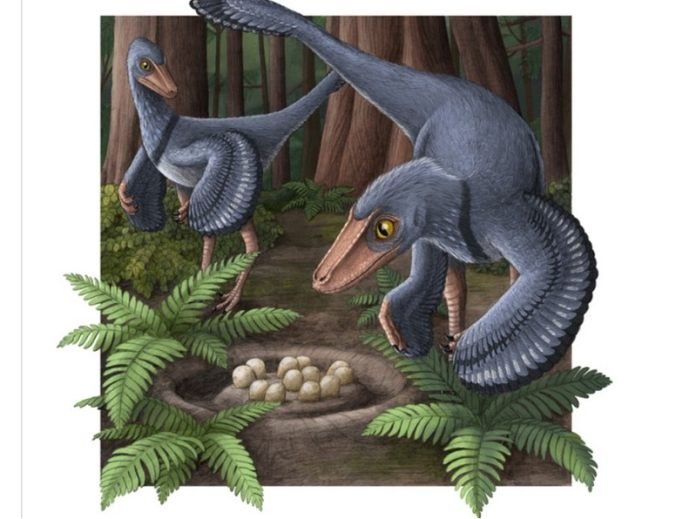
In millions of years and with a long sequence of small changes, evolution has shaped a particular group of dinosaurs, the theropods, into the birds we watch fly around the planet today.
Birds are the only descendants of dinosaurs that survived the catastrophic extinction 66 million years ago that ended the Cretaceous period.
A group of scientists led by Mattia Tagliavento and Jens Fiebig from Goethe University Frankfurt, Germany, have made a fascinating discovery about the ancient dinosaur, Troodon.
Troodon was a theropod, a carnivorous dinosaur that roamed North America about 75 million years ago.
It had some bird-like features, such as hollow and light bones, fully developed feathery wings, and laid asymmetrical, colored eggs.
By studying the calcium carbonate of Troodon eggshells, the researchers were able to determine that Troodon’s body temperature was 42°C and that it could reduce its body temperature to 30°C, similar to modern birds.
The study also revealed that Troodon eggs were laid in a way that was more comparable to modern reptiles than to birds.
Troodon was a carnivorous dinosaur with some bird-like features, such as hollow and light bones, fully developed feathery wings, and asymmetrical, colored eggs.
However, the scientists discovered that Troodon did not have a reproductive system similar to birds. Instead, Troodon females laid their eggs in a way that was more like modern reptiles.
The research team used a method called “dual clumped isotope thermometry” to analyze the Troodon eggshells.
This method allowed them to measure the extent to which heavier varieties of oxygen and carbon clump together in carbonate minerals, which made it possible to determine the temperature at which the eggshells crystallized.
They compared the isotopic compositions of Troodon eggshells to those of reptile and bird eggshells and found that Troodon eggshells had an isotopic composition that was typical of reptiles.
The researchers deduced that Troodon females laid their eggs in communal nests, as they produced only 4 to 6 eggs per reproductive phase, even though Troodon nests usually contained up to 24 eggs. This behavior is similar to that observed among modern ostriches.
This study is fascinating because it sheds new light on the reproductive system of Troodon and provides valuable information about how carbonate biomineralization evolved throughout Earth’s history.
The dual-clumped isotope method, originally developed to accurately reconstruct Earth’s surface temperatures of past geological eras, has now presented a new opportunity to study the evolution of carbonate biomineralization.
This study highlights how much we can learn from analyzing dinosaur fossils and eggshells.
With new methods and technologies, we can continue to uncover more information about the ancient world and how it connects to the present.
Source: Goethe University Frankfurt.



